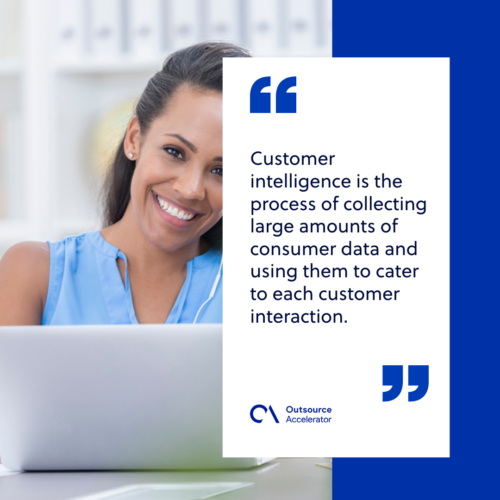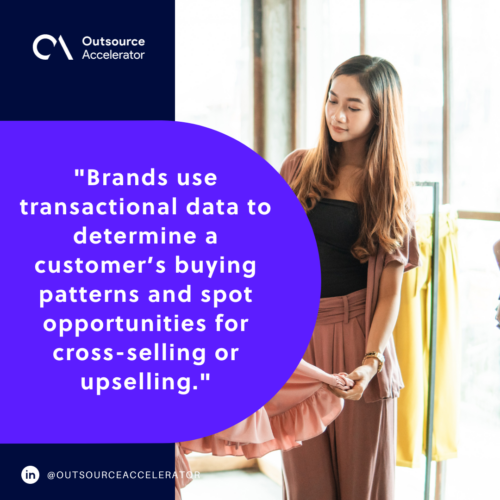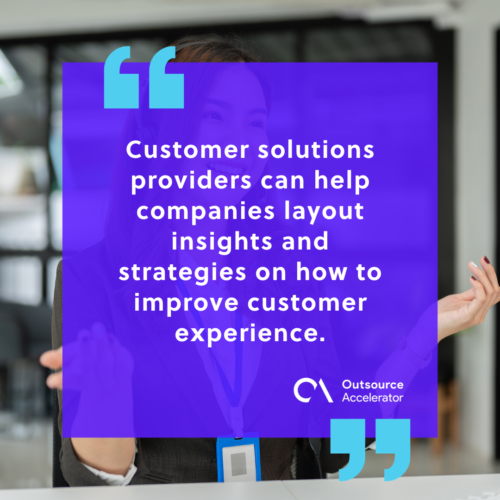Customer intelligence: A quick guide

Some brands nowadays rarely interact with customers face-to-face, so they must utilize all the information they get from their online databases.
Fortunately, brands can take full advantage of all the gathered data to get to know their customers better and interact with them more personally.
This process is called customer intelligence, and it is vital in understanding your customer base and forming deeper relationships with them.
It involves gathering and analyzing customer data to gain insights that can improve customer satisfaction and enhance the overall customer experience.
What is customer intelligence (CI)?
Customer intelligence is the process of collecting large amounts of consumer data and using it to tailor each customer interaction.
Brands use these sets of data to find patterns and create insights about all sorts of things pertaining to their customers, such as:
- Likes and dislikes
- Pain points
- Favorite products
- Past purchases
- Customer interactions
Customer intelligence is important in customer relationship management, as it predicts needs, personalizes experiences, and enhances service.
A data-driven approach fosters customer loyalty, helps businesses improve retention rates, and drives profitability.

Importance of customer intelligence
The overall goal of customer intelligence is to create personalized experiences for your customers.
Each customer is different and has specific needs, interests, and tastes, so it would not be the best move to provide the same product or service to every single customer.
This allows brands to give their customers what they want and respond to their concerns with empathy and in a personal way.
In return, a deeper buyer-seller relationship is formed, which is great for long-term business success.
Using customer relationship management software, companies can collect insights on customer behavior, preferences, and interactions.
This data helps businesses personalize customer communications, deliver marketing campaigns, and provide customer service.
Types of customer intelligence
Customer intelligence comes in different forms, all of which are useful in getting to know your patrons.
Demographic data
Demographic data refers to the customer’s basic characteristics, such as age, gender, occupation, and location.
This information gives you a first look at your customers on a surface level, which allows you to segment them into different groups based on these characteristics.
Demographic data plays a pivotal role in understanding customer behavior throughout the customer journey.
Customer satisfaction surveys gather direct feedback from customers.
Behavioral data
Behavioral data refers to the customers’ actions and interactions with the brand across different channels. This includes website visits, customer feedback, and social media engagement.
With this data, you can monitor how your customers engage with your brand as a way to gauge their interests and plan personalized marketing messages.
For example, a customer who likes or shares more than one social media post is likelier to be loyal than one who does nothing at all.
Transactional data
Transactional data refers to the actions made by customers when they purchase a product or service from your company.
This data tells you what your customers are interested in, how much they spent, and if they would be willing to buy more.
Brands use transactional data to determine a customer’s buying patterns and spot opportunities for cross-selling or upselling.

Psychographic data
Psychographic data is a customer’s values, attitudes, lifestyles, opinions, and other internal characteristics.
It is like going into your customers’ brains and learning how they think and view the world.
The goal of psychographic data is to narrow down your target market even further by tapping into your customers’ minds.
How to collect customer intelligence data
Customer intelligence data can be collected through the following steps:
Utilize various customer intelligence sources
Customer intelligence can be found on various sources and channels, so there is a lot of information to work with to help you get to know them better.
Some common sources include:
- Customer feedback
- Customer interactions (In-store or online)
- Social media
- Emails
- Surveys
- Data analytics tools
By focusing on customer intelligence sources like customer relationships, detailed customer data, and customer behaviors, businesses gain insights for decision-making.
Analyze quantitative and qualitative data
Once you have the necessary data, use a customer intelligence tool to help you analyze and find patterns.
Start with quantitative data before moving to qualitative data. This data includes those that are easy to measure using numbers or percentages.
Qualitative data gives you more context into your customers by helping you figure out details, insights, and trends among them.
Analyze customer data from internal and external sources like sales records and customer feedback, as well as external sources such as social media trends and market research reports, companies gain insights into consumer behavior.
Create an action plan
Now that you have all the information needed about your customers, use them to form an action plan.
Set objectives and come up with strategies to create the best possible customer experience.
This can be through creating brand deals, offering them discounts or complementary items, or ensuring their needs are met.

Customer intelligence best practices
Businesses must internalize various best practices to harness customer intelligence’s full potential.
- Data privacy and security – Brands must make it a priority to safeguard their customers’ personal information to maintain trust.
- Data unification – It is important for everyone in the organization to have access to the data in order to contribute to creating personalized customer experiences.
- Customer sentiment – Customer sentiment helps determine how a customer feels about a brand and come up with ways to reduce customer churn.
- Partner with experts – Customer solutions providers can help companies lay out insights and strategies on how to improve customer experience.
- Putting the customer first – Businesses should utilize customer-centric approaches, which results in a higher retention rate and happier buyers.







 Independent
Independent




